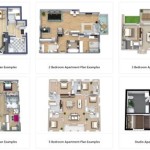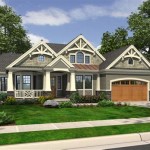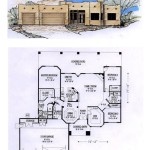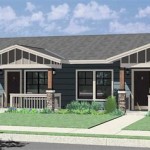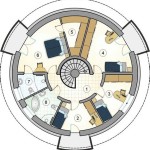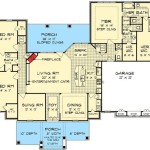Tiny Homes Floor Plans With Loft: Maximizing Space and Style
The tiny home movement has gained significant traction in recent years, driven by a desire for financial freedom, minimalist living, and a reduced environmental footprint. Among the various design configurations, tiny homes with lofts stand out as a particularly efficient and popular choice. The incorporation of a loft area allows for the separation of living and sleeping spaces, maximizing the use of the limited square footage.
Tiny home floor plans with lofts offer a versatile solution for individuals, couples, and even small families seeking to downsize without sacrificing comfort and functionality. These designs often prioritize vertical space, creating a layered living arrangement that feels more spacious than it actually is. Understanding the nuances of designing and implementing a loft in a tiny home is crucial for creating a comfortable and livable environment.
Key Considerations for Loft Design in Tiny Homes
Designing a loft area in a tiny home requires careful consideration of several factors to ensure practicality, comfort, and safety. These factors include headroom, accessibility, safety features, and storage solutions. Optimizing each of these elements is essential for a successful and functional loft space.
Headroom is arguably the most important factor in loft design. Insufficient headroom can lead to discomfort and a feeling of claustrophobia. Generally, a minimum of 3 feet of headroom is recommended for a sleeping loft, allowing occupants to sit comfortably. However, ideally, the loft should have enough headroom to stand, especially in areas intended for activities beyond sleeping. Achieving adequate headroom often involves considering the overall height of the tiny home and the placement of the loft within the structure.
Accessibility to the loft is another key concern. Common access methods include ladders, stairs, and alternating tread stairs. Ladders are the most space-efficient option, but they may not be suitable for everyone, especially those with mobility issues or young children. Stairs, while requiring more space, offer a safer and more comfortable way to access the loft. Alternating tread stairs represent a compromise, providing a steeper but still navigable solution. The choice of access method should be based on the available space, the occupants' physical abilities, and safety considerations.
Safety features are paramount in loft design. Guardrails or banisters are essential to prevent falls, particularly in sleeping lofts. The loft floor should be strong enough to support the intended weight, and the framing should be structurally sound. Building codes often specify minimum requirements for loft construction, and it's crucial to adhere to these regulations to ensure safety and compliance. Smoke detectors should be installed in the loft area to provide early warning in case of fire. Emergency escape routes, such as a window, should also be considered in the design.
Storage solutions are often integrated into loft designs to maximize space utilization. Built-in shelving, drawers, and cubbies can be incorporated into the loft walls or under the loft floor. These storage solutions help to keep the tiny home organized and clutter-free, contributing to a more comfortable and livable environment. Utilizing vertical space through shelving and drawers is crucial in the small footprint of a tiny home.
Common Loft Floor Plan Configurations
The configuration of the loft within a tiny home can significantly impact the overall layout and functionality. Several common loft floor plan configurations exist, each offering unique advantages and disadvantages. These configurations include full lofts, partial lofts, and multi-level lofts.
A full loft extends across the entire width or length of the tiny home, maximizing the available sleeping or storage space. This configuration is ideal for couples or individuals who require a dedicated sleeping area and have the overall height to accommodate it. Full lofts typically require a more substantial support structure and may necessitate a higher roofline to achieve adequate headroom.
Partial lofts, on the other hand, cover only a portion of the tiny home's floor area. This configuration allows for a balance between loft space and open living areas. Partial lofts are often used to create a cozy reading nook, a home office, or extra storage space. They can be integrated into the design to create a sense of separation between different zones within the tiny home.
Multi-level lofts are less common but offer a creative solution for maximizing vertical space. This configuration involves stacking multiple loft levels on top of each other, typically used for sleeping, storage, or specialized activities. Multi-level lofts require careful planning and structural engineering to ensure stability and safety. They can also create a unique and visually interesting interior design.
Irrespective of the specific configuration chosen, the placement of the loft within the overall floor plan needs careful consideration. Typically, lofts are located above the kitchen or bathroom areas, as these spaces often require less headroom. The placement of windows and skylights can also impact the usability and comfort of the loft area. Natural light and ventilation are essential for creating a pleasant and livable loft space.
Adapting Loft Layouts to Different Needs
Tiny homes with lofts are not a one-size-fits-all solution. The ideal floor plan and loft layout will vary depending on the specific needs and preferences of the occupants. Factors such as family size, lifestyle, and mobility requirements play a significant role in shaping the design.
For families with children, a loft can provide a dedicated sleeping area for the kids. In this case, safety features such as guardrails and child-proof stairs are particularly important. The loft can also be designed with built-in storage for toys and clothing, helping to keep the tiny home organized. Alternatively, the loft could be used as a playroom or study area.
For individuals who work from home, a loft can be transformed into a functional and comfortable home office. Natural light is particularly important in this context, and the loft should be designed to maximize sunlight exposure. Adequate ventilation is also crucial for creating a productive work environment. The loft can be equipped with a desk, shelving, and storage for office supplies.
For individuals with mobility issues, a loft may not be the most suitable option. However, if a loft is desired, careful consideration should be given to accessibility. A wider staircase with handrails is essential, and the loft should be designed to minimize the need for bending or stooping. Alternatively, a ground-level bedroom can be incorporated into the floor plan, eliminating the need for a loft altogether.
The design of a tiny home with a loft can also be adapted to accommodate specific hobbies or interests. For example, a loft could be used as a music studio, a painting studio, or a yoga space. In these cases, the loft should be designed with the specific needs of the hobby in mind. Soundproofing, lighting, and storage solutions can be tailored to create a functional and inspiring space.
Regardless of the specific needs and preferences of the occupants, flexibility is key in designing a tiny home with a loft. The floor plan should be adaptable to changing needs over time, and the loft should be designed to serve multiple purposes. Modular furniture and storage solutions can help to maximize flexibility and ensure that the tiny home remains functional and comfortable for years to come.

9 Plans Of Tiny Houses With Lofts For Fun Weekend Projects

Tiny House Floor Plans With Lower Level Beds Tinyhousedesign

The Mcg Loft V2 A Tiny House For Year Round Living Humble Homes

10 Unique Plans Of Tiny Homes And Cabins With Loft Craft Mart

Tiny House Floor Plan With Bedroom Loft

Tiny House Floor Plan With Loft

20 House Plans With Lofts Tiny Small Luxury Designs Blog Homeplans Com

Tiny House Floor Plans 32 Home On Wheels Design

10 Unique Plans Of Tiny Homes And Cabins With Loft Craft Mart

4 Free Tiny House Floor Plans And Designs You Can Follow Realestate Com Au

